 With a file and some basic skills in painting this battle can be refought with the figures from dutkins moulds. Just use imagination. Heres an idea.The Battle of Tel el-Kebir or el-Tal el-Kebir was between the Egyptian army led by Ahmed Urabi and the British military fought near Tel-el-Kebir. After discontented Egyptian officers under Urabi rebelled in 1882, the United Kingdom reacted to protect its financial and expansionist interests in the country, and in particular the Suez Canal.
With a file and some basic skills in painting this battle can be refought with the figures from dutkins moulds. Just use imagination. Heres an idea.The Battle of Tel el-Kebir or el-Tal el-Kebir was between the Egyptian army led by Ahmed Urabi and the British military fought near Tel-el-Kebir. After discontented Egyptian officers under Urabi rebelled in 1882, the United Kingdom reacted to protect its financial and expansionist interests in the country, and in particular the Suez Canal.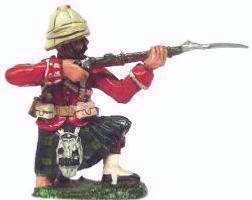
On May 20, a combined Anglo-French fleet arrived at Alexandria. At the same time, Egyptian troops were reinforcing the coastal defenses of the city in anticipation of an attack. These events heightened tension in Alexandria, and eventually triggered a pogrom in the city by Moslem Egyptians and Christian Europeans, principally British civilians, in which hundreds of White men, women, and children were massacred. As a result of the massacre, which was done at the connivance of the new Moslem Arabic revolutionaries, an ultimatum was sent to the Egyptian government demanding they order Urabi's officers in Alexandria to dismantle their coast defense batteries.

The Egyptian government refused. Meanwhile, tension increased between Britain and France over the crisis, as most of the losses had been non-French, and the principal European beneficiaries of the revolution would be the French. Thus, the French government refused to support this ultimatum and decided against armed intervention.
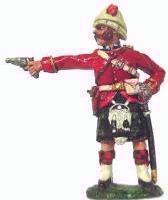
When the ultimatum was ignored, Admiral Seymour gave the order for the British fleet to bombard the Egyptian gun emplacements in Alexandria. On July 11 at 7:00 am, the first shell was fired at Fort Adda by HMS Alexandra (1875) and by 7:10, the entire fleet was engaged. The coastal defenses returned fire soon after, with minimal effect and minimal casualties to the British fleet. No British ships were sunk. On July 13, a large British naval force landed in the city. Despite heavy resistance from the garrison for several hours, the overwhelming superiority of the smaller British forces eventually forced the Egyptian troops to withdraw from the city.

Photograph of HMS AlexandraLieutenant General Garnet Wolseley was placed in charge of a large force with the aim of destroying Urabi's regime and restoring the nominal authority of the Khedive Tawfiq. The total force was 24,000 British troops, which concentrated in Malta and Cyprus, and a force of 7,000 Indian troops which staged through Aden.
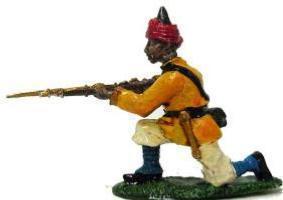
Wolseley first tried to reach Cairo directly from Alexandria. Urabi deployed his troops at Kafr-el-Dawwar between Cairo and Alexandria and prepared very substantial defences.
There, attacks by British troops were repelled for five weeks Wolseley now decided to approach Cairo from a different route. He resolved to attack from the Suez canal. Urabi knew that Wolseley's only other approach to Cairo was from the canal, and he wanted to block the canal. Ferdinand de Lesseps, upon knowing of Urabi's intentions, assured him the British would never risk damaging the canal, and would avoid involving it in operations at all costs (according to Lutsky, he even "gave his word of honour to Arabi not to permit the landing of British troops in the Canal Zone, and Arabi trus de Lesseps.

By so doing, Arabi committed a grave military and political mistake". Urabi listened to his advice and did not block the canal, leaving it open for an invasion by British forces. As a result, Wolseley's forces were able to quickly secure the canal.
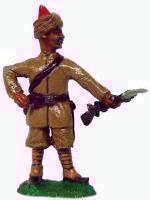
Two armies, one from Britain and the other from India landed in the canal. Over 40 warships were involved in the operation. By September 6, the canal was securely in British hands
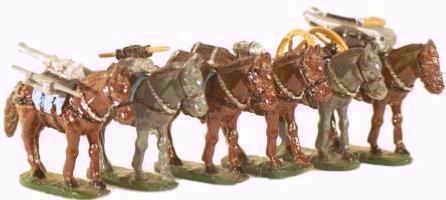
Urabi attempted to recapture the canal when he attacked the British forces near Kassassin on September 10. The British troops were caught by surprise, as they did not expect an attack. Fighting was intense, and there were heavy losses on the British side. Fortunately for them, the arrival of fresh reinforcements, including the the superb 7th Dragoon Guards and the Highland Brigade, forced the larger but weary Egyptian troops to retreat.

Urabi redeployed to defend Cairo against Wolseley. His main force dug in at Tel el-Kebir, north of the railway and the Sweetwater Canal, both of which linked Cairo to Ismailia on the canal. The defences were hastily prepared as there was little time to arrange them. Urabi's forces possessed 60 pieces of artillery and breech loading rifles. Wolseley made several personal reconnaissances, and determined that the Egyptians did not man outposts in front of their main defences at nig
No comments:
Post a Comment